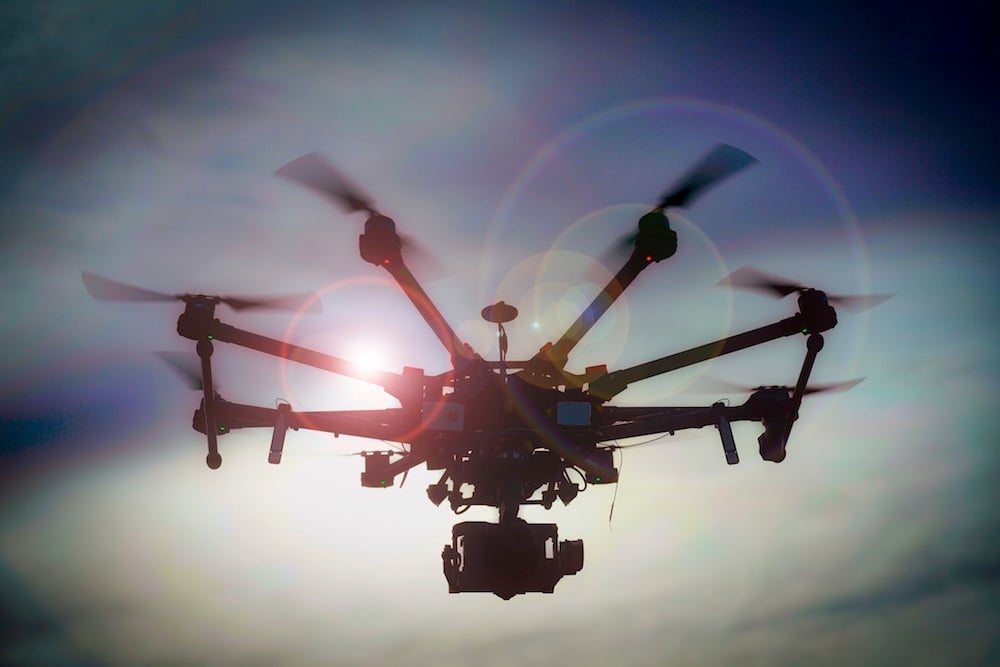
While drones may not be a new technology, it’s only recently that their mass adoption and use has grown. Amidst this growth, the majority of opportunities have come from the commercial and civil side. In fact, according to 2016 research from Goldman Sachs, commercial and civil organizations are expected to spend $13 billion on drones by 2020.
So where can you find these unmanned aerial vehicles in the sky? Here’s a look at some of the trending industry applications.
5 Popular Applications of Unmanned Aerial Vehicles
1. Thermal Sensors for Search and Rescue Missions
Search and rescue operations after a natural disaster are no small feat. Fires, flooded roads and other hazards can make for a dangerous and difficult job.
Unmanned systems with thermal sensors help assist with such rescue efforts. Not only can this technology pinpoint the location of individuals, but it can also aid rescue teams in navigating safely and efficiently. For instance, the thermal imaging devices can show firefighters where a blaze is hottest as well as help spot leaking chemicals in a train derailment.
2. Precise Monitoring of Crops
Farming practices once revolved around cultivating crops through trial-and-error. But with the global demand for food and the challenge of scarcity, traditional farming practices are now being integrated with innovative technology.
In the world of precision agriculture, unmanned aerial vehicles are an important resource. As drones with cameras or sensors fly over thousands of acres, they are able to collect data about crops, from stress to pest damage. Farmers can use this insight to better understand their land and make informed decisions on where to focus their attention.
3. Law Enforcement Surveillance
Search and rescue operations aren’t the only reason many law enforcement agencies are embracing use of unmanned systems. The same ability to cover ground quickly is valuable in other situations as well.
Consider the clearance required after a traffic accident. Unmanned aerial vehicles can save time and costs by capturing an aerial view of the scene and then having it reconstructed in a digital format for analysis. This approach is especially helpful in the case of large-scale accidents and in locating and seizing trails of fluids from crashed vehicles.
4. Aerial Journalism
When it comes to storytelling, visual elements play an important role. While reporters can easily capture these elements in some cases, other situations can prove difficult—whether it’s the remote nature of the area or a dangerous environment.
Drone technology gives journalists a cost-effective way to reach such places and deliver unique visual perspectives. Not only does this make for more powerful storytelling, but it also provides reporters with a more holistic view of the situation and can offer unexpected insights.
5. Unmanned Cargo Transport
The same remote locations that journalists attempt to report on can also be where military troops are stationed. While there, it’s important that troops continuously receive vital supplies like water, food and fuel.
Thanks to unmanned aerial vehicles, such cargo can be transported safely and efficiently. The innovative nature of the technology helps ensure that supplies are dropped off in the proper areas, even when GPS capabilities are compromised or visibility conditions are poor.
Successful Unmanned Systems Begin with the Right Parts
Many industries are embracing the use of drone technology. While the applications vary, there is a shared bond between the success of these designs: high-precision metal parts.
The team at Switzer helps businesses across various industries achieve this. We combine cutting-edge techniques like chemical etching with secondary processes to design and manufacture metal parts that meet your tight tolerances and exceed performance expectations.
Why wait? Contact us today about your metal part.
.png)

